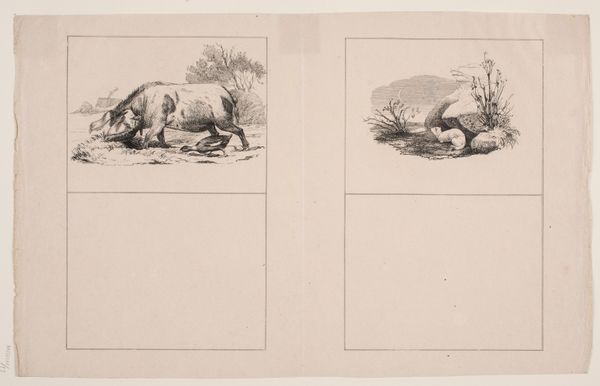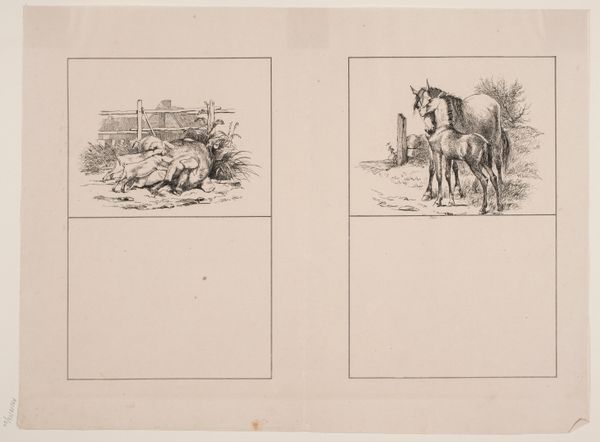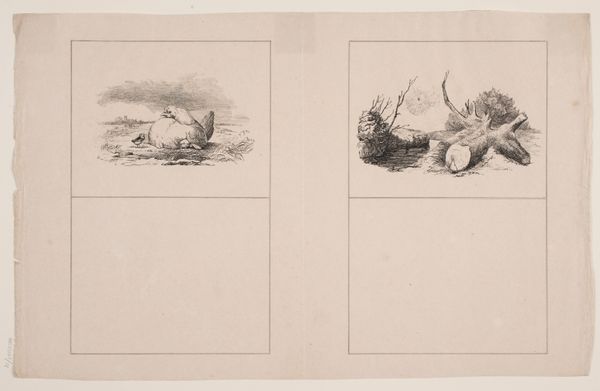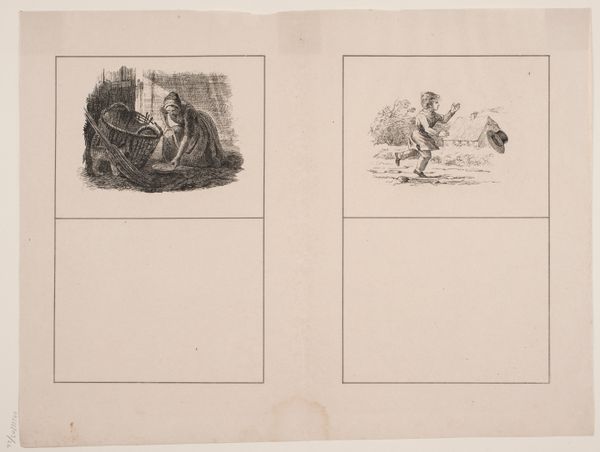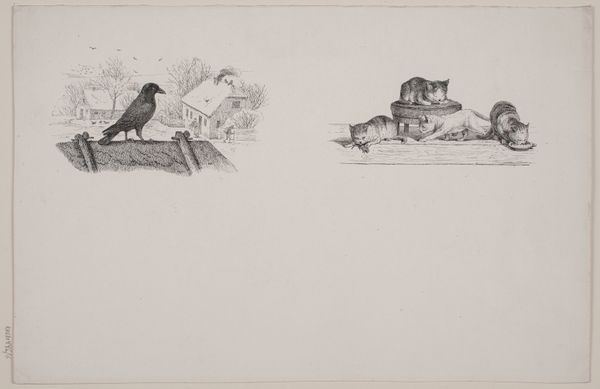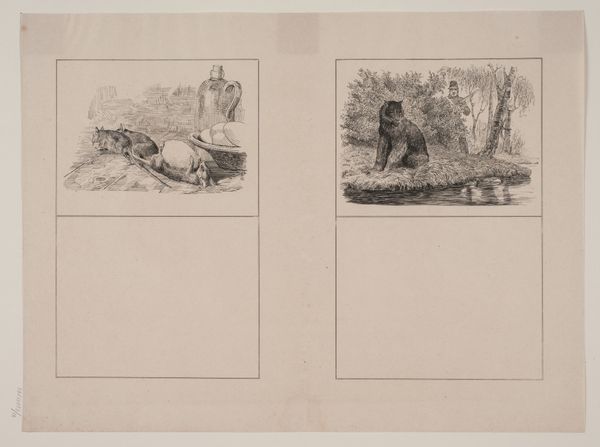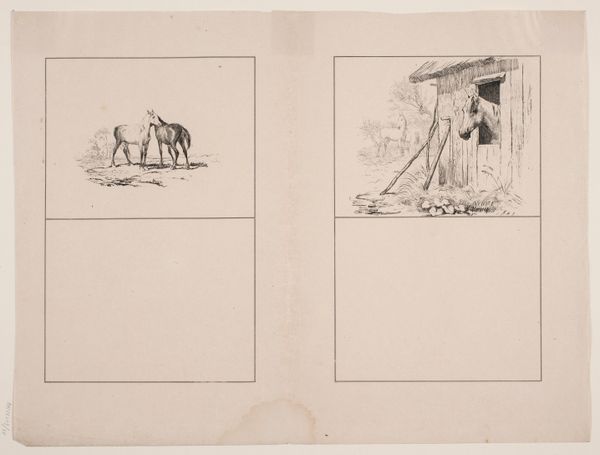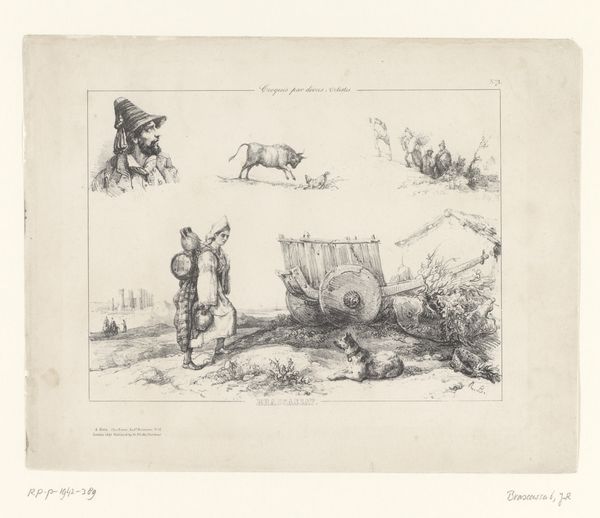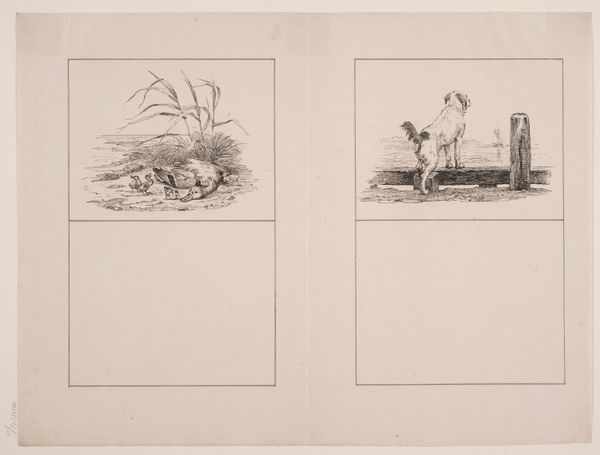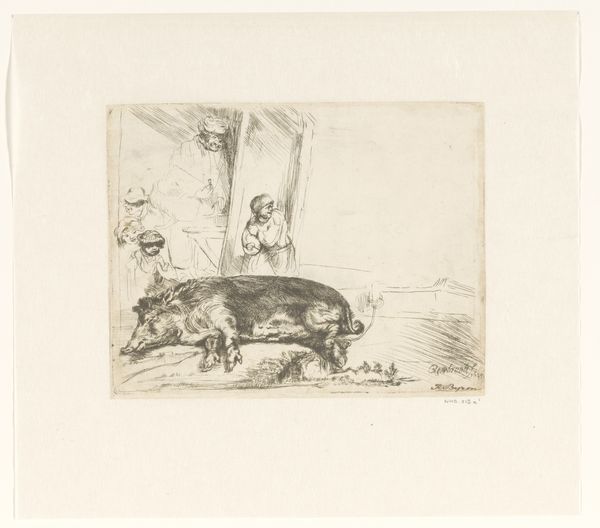
drawing, lithograph, print, etching
#
drawing
#
lithograph
# print
#
etching
#
landscape
#
etching
#
ink drawing experimentation
#
genre-painting
Dimensions: 277 mm (height) x 362 mm (width) (bladmaal)
Editor: This is "Slagsmålet; Lænkegrisen" – that's "The Fight; The Chained Pig" – by Adolph Kittendorff, created in 1845. It appears to be a print using etching, lithography, and drawing. It has two sections showing two contrasting scenes. The scene with the dogs feels quite energetic, whereas the other, with the pig, evokes more empathy, even sorrow. How do you interpret this work? Curator: That's an interesting initial read. Considering the social context, prints like these were often circulated as part of larger publications, sometimes satirical or educational. Think about what the "fight" and the "chained pig" might represent metaphorically in 1845 Denmark. Do you see any societal critiques or commentary woven into these seemingly simple genre scenes? Editor: Hmmm, I hadn’t considered a deeper symbolic meaning. The pig being chained, is that an evocation of oppression? And, could the fighting dogs be the oppressor class in society? Curator: Precisely. The visual language employed, such as the restriction of the pig by the chain and the unrestrained tussle between the dogs, are not accidental. The use of these kinds of stark imagery at that time likely functioned to stir reflection on class dynamics and social justice, perhaps prompting conversations, or even action. How do you see its role in a museum today? Editor: It’s powerful to think this image might have sparked actual conversation back then. Now, as a museum piece, I wonder if we adequately convey its original intention, it almost feels lost and the etching looks like it belongs in the illustration of a children’s book? Curator: That's a very astute observation. Its display and interpretation are paramount to restoring some of its original societal functions as social commentary, or opening it up for a fresh debate from a different modern angle. Perhaps the fight can now represent conflict more widely, not just within Danish society? Editor: I guess this artwork reminds me that things are not always what they seem, and historical context can profoundly shape our interpretation of art! Curator: Indeed. And even our modern context influences what we can learn from this print today.
Comments
No comments
Be the first to comment and join the conversation on the ultimate creative platform.
